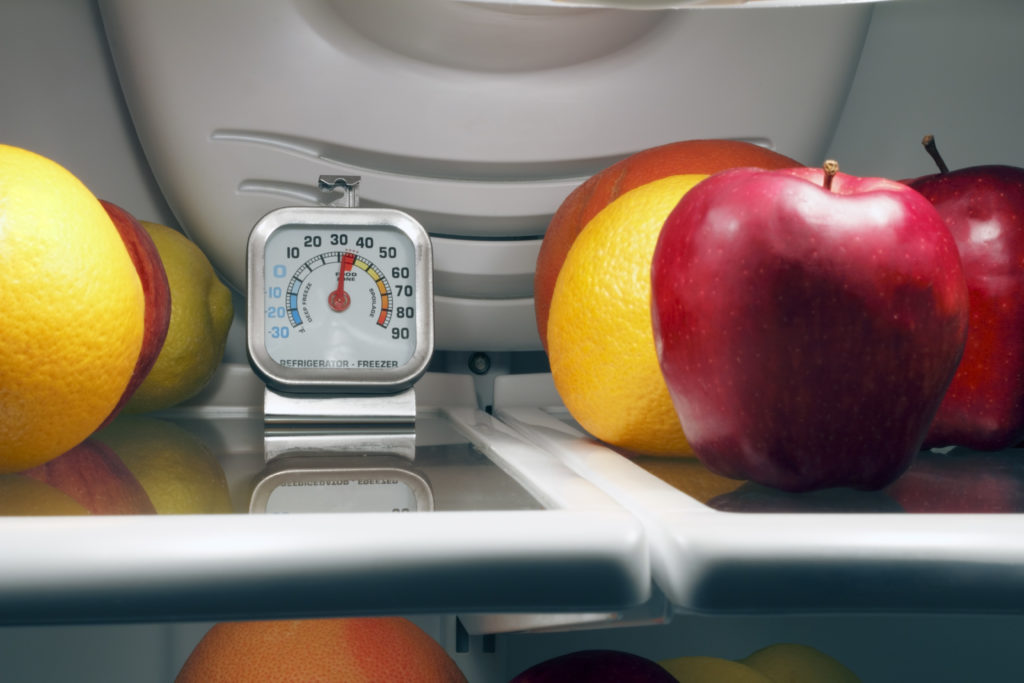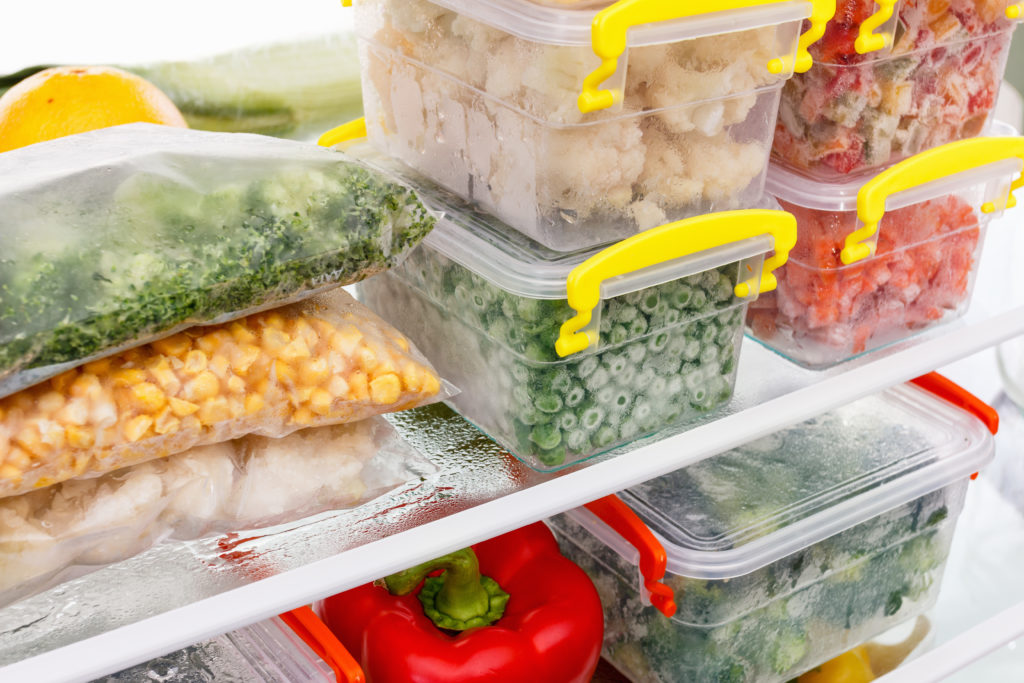What Are Ideal Fridge and Freezer Temperatures?
- Home /
- News & Advice /
- What Are Ideal Fridge and Freezer Temperatures?
- March 6th, 2019
- 4 Comments
- Posted in advice centre

If you’ve ever taken something out of the fridge and discovered that it’s half frozen or worse, lukewarm, you’ll probably be curious to know what the ideal temperature to keep your fridge and freezer is. A fridge that freezes your tomatoes, wilts your salad, or turns your milk into cheese is either broken or needs adjusting.
The purpose of a refrigerator is to slow down the growth of bacteria and the purpose of a freezer is to slow the bacteria even further through the process of freezing. If these appliances aren’t maintaining the correct temperature, they’re falling short of their purpose.
Ideal Fridge Temperature
Bacteria is present in all food, but it can be thought of in two ways: there’s good bacteria, and then there’s bad bacteria. Good bacteria is added to food at the point of manufacture to make it taste better, and can often be found in items such as sourdough bread, beer and yoghurt. A recognisable sign of bad bacteria is mould – food with mould is not safe to eat.
The spoiling of food is inevitable, as microscopic organisms are constantly feasting on our food. When food is refrigerated, the growth of bacteria is slowed. According to the UK food standards agency, the ideal fridge temperature for food is 8°C and below. Taking into account the temperature drop from the opening and closing of the fridge door, the fridge should be set at a temperature between 1-5°C.
What do the numerical settings on the fridge mean?
Some fridges don’t show the temperature but work on a setting that is listed from 1 to 5. The numbers on the fridge’s temperature dial indicate the refrigerating power. Therefore, the higher the setting, the cooler the fridge will be. Choosing setting 5 will make your fridge the coldest. In order to measure the temperature accurately, keep a thermometer on the middle shelf of the fridge, or check out these other ways to measure fridge temperature.

Ideal Freezer Temperature
Contrary to popular opinion, freezing food does not halt the growth of bacteria – it will just slow it down. When freezers first became common in homes, food was frozen at -10°C. However, if food is frozen at lower temperatures, it will slow the bacteria growth even further, and preserve the Vitamin C content in frozen vegetables. Today, -18°C is the accepted standard for freezing food.
Why Is My Fridge At The Wrong Temperature?
There’s a range of reasons why your fridge could be at the wrong temperature. Poor organisation can stop the proper airflow around a fridge, meaning that some parts of the fridge are colder than others. Check the seal around the fridge door – if it’s not fitted properly, this means that cold air can escape easily. If you have a broken thermostat, your fridge temperature will not be adjustable.
If you believe your fridge has a fault that causes it to be too cold or too warm, call us at Glotech for a fridge repair today.
Comments
Casey Hewer
Friday, January 24, 2025 at 12:10 pmIf your Hisense fridge isn’t cold enough even at the highest setting, the issue could be due to airflow obstruction, a faulty thermostat, or a problem with the compressor or cooling system.
Start by ensuring the vents inside the fridge are not blocked by food items, as this can restrict cold air circulation. Check that the door seals are clean and sealing properly to prevent warm air from entering. If the issue persists, the thermostat, evaporator fan, or compressor may require inspection.
We recommend booking an engineer to diagnose and repair the problem. Let me know if you’d like help arranging this!
What should the temperature settings be when the only control is in the fridge Mmy no frost freezer is icing up
Saturday, February 15, 2025 at 3:35 pmWhat should the temperature settings be for the freeze, when the only control is in the fridge The non frost freezer is freezing up and icy The temperature settimg in the fridge is on 3
Casey Hewer
Thursday, February 20, 2025 at 4:11 pmFor a fridge-freezer with a single control in the fridge, the recommended temperature settings are:
– **Fridge:** Between **3°C and 5°C**
– **Freezer:** Around **-18°C**
Since your **frost-free freezer is icing up**, it could be due to poor airflow, a faulty door seal, or an issue with the defrost system. Try these steps:
1. **Check the door seals** for any gaps or damage.
2. **Avoid overloading** the freezer to ensure proper air circulation.
3. **Manually defrost** the unit by switching it off for 24 hours.
4. If the issue persists, the defrost heater, thermostat, or sensor may need attention.
If you’d like an engineer to inspect it, let me know!
Leave a Reply


Sunday Ogunleye
Tuesday, January 21, 2025 at 12:16 pmMy Hisense fridge is not cold enough with the highest setting, please what can i do.